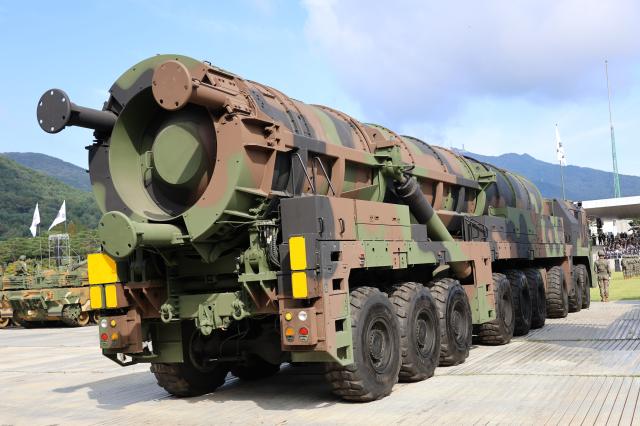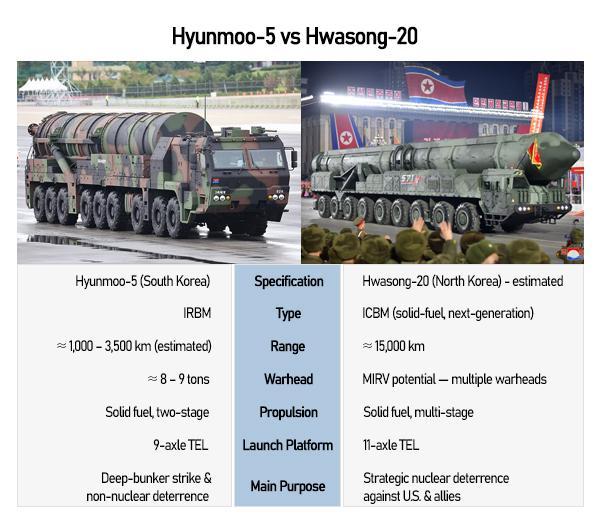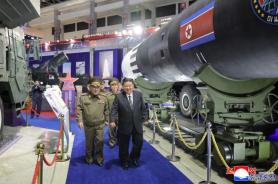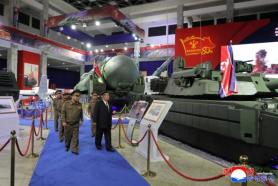
The Defense Ministry confirmed the plan to AJP on Friday, saying the Hyunmoo-5 — dubbed the "monster missile" for its unprecedented payload — has entered the operational fielding phase and is planned for mass production, with deployment set to begin by year-end.
The Hyunmoo-5, an intermediate-range ballistic missile with an estimated warhead wight of eight tons, was first unveiled during last year's Armed Forces Day ceremony.
The missile was designed to strike underground bunkers and command posts, as North Korea conceals much of its weapons infrastructure underground, serving as a key asset in Seoul's Korean Massive Punishment and Retaliation (KMPR) strategy — one of the three pillars of the nation's defense framework, alongside the Kill Chain and Korea Air and Missile Defense (KAMD) systems.
Defense Minister Ahn Kyu-baek recently said in an interview with Yonhap that a next-generation missile system with greater range and payload capacity is also under development to reinforce what officials describe as a credible conventional deterrent against Pyongyang's growing nuclear arsenal.
"The Hyunmoo-5 was designed both as a deterrent against North Korea's advancing nuclear capabilities and as a powerful means of retaliation should deterrence fail," said Shin Seung-ki, research fellow at the Korea Institute for Defense Analyses (KIDA).
He added that its operational impact could be comparable to a nuclear weapon depending on how it is employed.
Pyongyang recently unveiled its new Hwasong-20 intercontinental ballistic missile (ICBM) during a military parade marking the 80th anniversary of the Worker's Party, escalating concerns over its strategic reach. The new weapon is believed to be a solid-fuel, multi-stage ICBM with an estimated range of around 15,000 kilometers, potentially capable of reaching the U.S. mainland.

"If North Korea has dug more than 100 meters to hide key command posts or important weapons systems, we now possess a weapon capable of destroying those sites," Shin said. "Just as we feel threatened by North Korea's nuclear arsenal, they can regard the Hyunmoo-5 as a comparable threat."
Since North Korea currently has no ballistic-missile interception capability, there is effectively no system that can stop Hyunmoo series once launched.
There was also a strategic rationale behind the decision to reveal the weapon. Systems like the Hyunmoo-5 had not been publicly displayed before, and details such as production volume and deployment schedules usually remain classified — a rare disclosure that also signals Seoul's intent to project confidence in its conventional deterrence amid escalating tensions on the peninsula.
Copyright ⓒ Aju Press All rights reserved.




